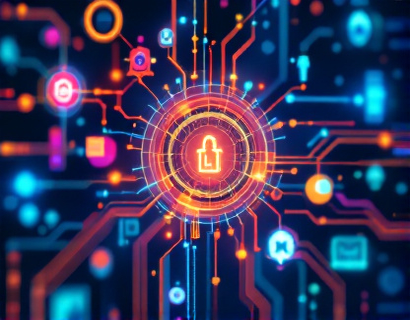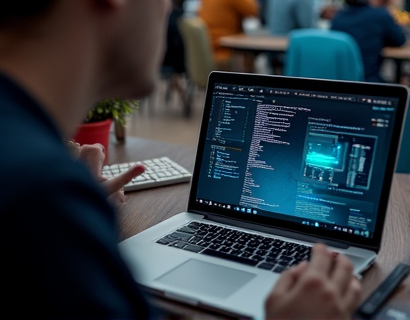Ethereum Layer 2: 2025 Insights - Mastering Scalability and Interoperability for Developers and Enthusiasts
As the Ethereum ecosystem continues to evolve, Layer 2 solutions have emerged as a critical component in addressing scalability and interoperability challenges. This comprehensive guide aims to provide developers and enthusiasts with essential insights and the latest updates to navigate the dynamic and evolving Ethereum landscape. In 2025, the focus on Layer 2 technologies remains paramount, as they play a pivotal role in enhancing the efficiency and accessibility of the Ethereum network.
Layer 2 solutions are designed to operate on top of the main Ethereum blockchain, or Layer 1, to offload transactions and reduce congestion. These solutions leverage various techniques such as state channels, sidechains, and rollups to achieve higher transaction throughput and lower fees. Understanding the intricacies of these solutions is crucial for anyone looking to stay ahead in the Ethereum development space.
Understanding Rollups
Rollups are one of the most promising Layer 2 solutions for Ethereum. They work by bundling multiple transactions off-chain and then submitting a single transaction to the main chain. This process significantly reduces the load on the main network, resulting in faster transaction times and lower gas fees. There are two main types of rollups: Optimistic Rollups and ZK Rollups.
Optimistic Rollups assume that all transactions are valid and only challenge invalid transactions. This approach requires a fraud proof period during which users can contest the validity of transactions. If no challenges are raised, the batch of transactions is confirmed. Optimistic Rollups have gained popularity due to their simplicity and relatively low implementation complexity.
ZK Rollups, on the other hand, use zero-knowledge proofs to bundle and verify transactions off-chain. These proofs provide a succinct and verifiable proof of the transactions' validity without revealing the transaction details. ZK Rollups offer higher security and faster finality compared to Optimistic Rollups, making them a preferred choice for applications requiring high trust and performance.
State Channels: Enhancing Microtransactions
State channels are another Layer 2 solution that excels in handling a high volume of microtransactions. Unlike rollups, state channels operate directly between two or more parties, allowing them to transact off-chain and only settle the final state on the main chain. This method is particularly useful for applications like gaming, decentralized finance (DeFi), and real-time market data services, where frequent small transactions are common.
The key advantage of state channels is their ability to achieve near-instant transaction confirmation and minimal gas costs. However, they require both parties to be online simultaneously to complete a transaction, which can be a limitation in certain use cases. Despite this, state channels remain a powerful tool for optimizing transaction costs and improving user experience in specific applications.
Sidechains: Expanding Interoperability
Sidechains are independent blockchains that are linked to the Ethereum main chain through two-way pegs. They allow assets and data to be transferred between the sidechain and the main chain, enhancing interoperability and enabling the Ethereum ecosystem to integrate with other blockchain networks. Sidechains can operate with different consensus mechanisms and features, providing flexibility and innovation opportunities.
One of the primary benefits of sidechains is their ability to support custom smart contracts and protocols, which can be tailored to specific use cases. This makes sidechains ideal for applications that require specialized functionalities not natively supported by Ethereum. Additionally, sidechains can help alleviate congestion on the main chain by processing less critical transactions, thereby improving overall network performance.
Cross-Chain Bridges: Bridging the Gap
Cross-chain bridges are essential for achieving true interoperability in the blockchain space. These bridges enable the transfer of assets and data between different blockchain networks, including Ethereum and other Layer 1 and Layer 2 blockchains. Bridges can be categorized into relayed bridges and atomic swaps.
Relayed bridges involve a trusted third party that facilitates the transfer of assets between chains. While this approach is straightforward, it introduces a central point of failure and trust. Atomic swaps, on the other hand, are protocol-level transactions that allow direct asset exchange without intermediaries. This method enhances security and trust but requires compatible smart contracts on both chains.
Cross-chain bridges play a crucial role in creating a interconnected blockchain ecosystem, enabling users and developers to leverage the strengths of multiple networks. This interoperability is vital for building a decentralized and resilient financial system, as well as for fostering innovation across various applications.
Challenges and Considerations
While Layer 2 solutions offer significant benefits, they also come with their own set of challenges and considerations. Security remains a top concern, as the complexity of these solutions can introduce new vulnerabilities. Developers must thoroughly test and audit Layer 2 protocols to ensure they are robust and secure.
Scalability itself is another factor to consider. While Layer 2 solutions aim to increase transaction throughput, the overall scalability of the Ethereum ecosystem depends on the effective deployment and adoption of these technologies. Network congestion and gas fee dynamics can still impact user experience if not managed properly.
Interoperability between different Layer 2 solutions and with the main chain is also a critical aspect. Ensuring seamless integration and compatibility is essential for building a cohesive and user-friendly ecosystem. Standardization efforts and community collaboration are key to overcoming these challenges.
Future Outlook
Looking ahead, the Ethereum Layer 2 landscape is expected to continue evolving with new innovations and improvements. The Ethereum 2.0 upgrade, which includes the transition to a proof-of-stake consensus mechanism, is set to enhance the network's scalability and security. This upgrade will provide a more solid foundation for Layer 2 solutions to thrive.
Moreover, the development of interoperability protocols like Polkadot and Cosmos is likely to further enhance the connectivity between different blockchain networks. These protocols will enable more seamless asset and data transfer, fostering a more integrated and efficient decentralized ecosystem.
For developers and enthusiasts, staying informed about the latest advancements in Layer 2 technologies is crucial. Engaging with the community, participating in development projects, and experimenting with different solutions will help in mastering the future of Ethereum and blockchain technology.
In conclusion, Layer 2 solutions are indispensable for addressing the scalability and interoperability challenges faced by the Ethereum network. By understanding and leveraging these technologies, developers and enthusiasts can contribute to building a more efficient, secure, and interconnected blockchain ecosystem. The journey ahead is exciting, and the potential for innovation is vast.










































